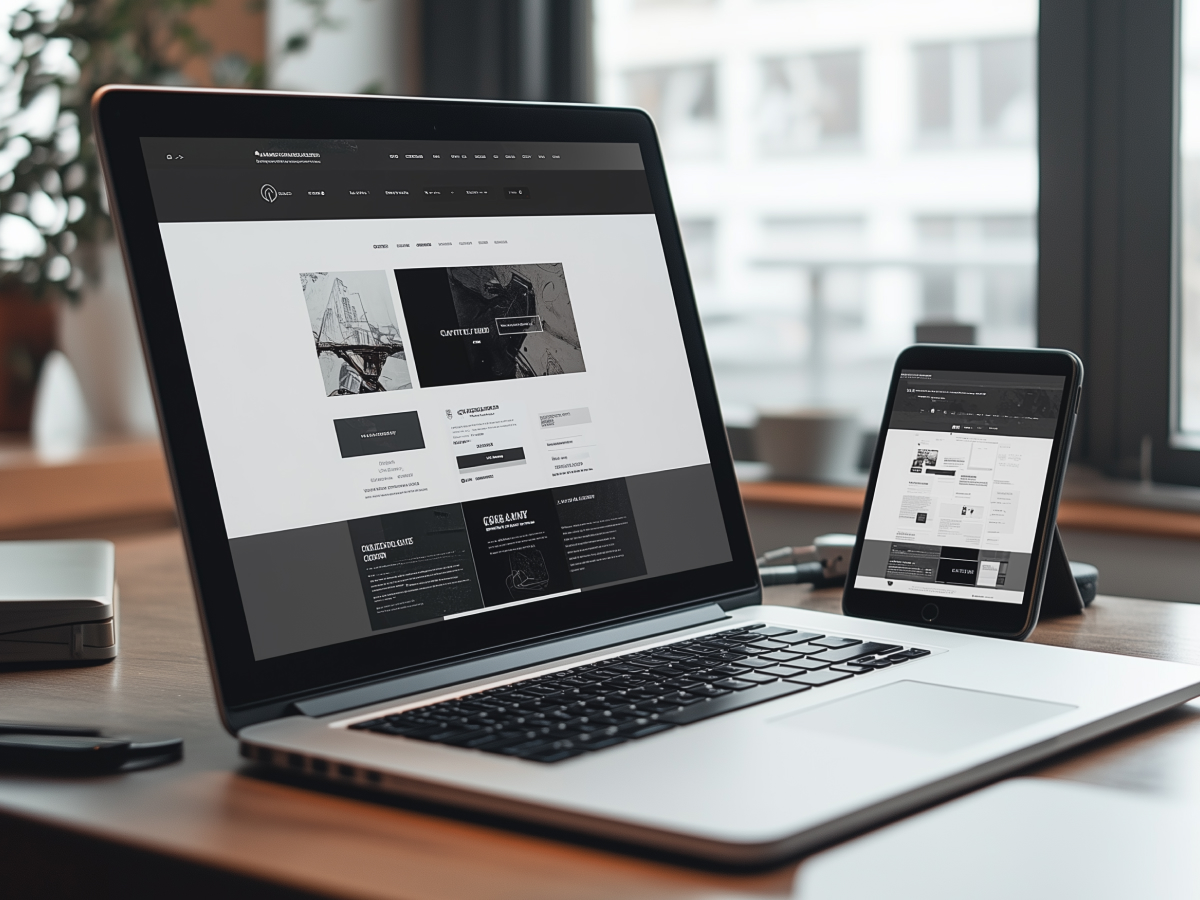Two different roads to the future of web design
Web design has come a long way. We’ve moved from hand-coding websites to full-scale visual development tools that let you build complex, high-performing sites without writing a single line of code. Two platforms—Webflow and Framer—are leading this shift, but they take fundamentally different approaches.
Webflow is built for precision. It’s a professional tool that bridges the gap between visual design and structured, developer-friendly code. If you need fine-tuned control, scalability, and robust content management, Webflow gives you that.
Framer, on the other hand, started as a prototyping tool and has evolved into a fast, design-first web builder. Its focus is speed and flexibility. You get a powerful design engine, fluid animations, and rapid iteration. If you want to go from an idea to a live site in hours, Framer makes that easy.
Both platforms are pushing the industry forward, but they serve different needs. Webflow powers over 720,000 websites, showing its strong presence in the professional web development space. Framer, with 17,000 sites, is still growing but has a dedicated following of designers who prioritize creative control over deep technical customization.
Your choice comes down to what you need. If you’re scaling a business, managing complex content, or want a platform that grows with you, Webflow makes sense. If you need speed, high-impact visuals, and a frictionless creative process, Framer is your best bet.
Webflow’s structured power vs. Framer’s simplicity
A website is only as good as the system that keeps it running. That’s where content management comes in. Whether you’re running a media-heavy site, an eCommerce platform, or a simple landing page, the way you manage your content dictates efficiency, scale, and flexibility.
Webflow’s Content Management System (CMS) is built for professionals handling complex, dynamic content structures. Think of it as a visual database for your website. You can create relationships between different types of content—like linking blog posts to author pages, structuring product pages, or even managing multi-language versions of your site. It gives your team full control without requiring a developer for every update.
Key features include:
- Reference fields: These let you build structured relationships between different content types, improving navigation and the overall user experience.
- Custom workflows: You can set up approval processes and publishing schedules that match your team’s workflow.
- Multi-language support: Essential for international businesses looking to scale without building duplicate sites.
Framer’s CMS, in contrast, is lightweight and simple. It’s designed for quick updates, straightforward content structures, and speed. If you’re running a portfolio, a marketing page, or a small business website where content updates are minimal, Framer’s CMS is enough. But if you’re dealing with thousands of pages, multiple authors, or structured content that needs deep interlinking, Webflow is the better option.
Webflow’s Business plan ($39/month) includes full CMS capabilities, while Framer’s Pro plan ($30/month) is optimized for smaller teams and simpler content needs. If content is core to your business, Webflow is the better bet. If you just need a functional CMS for quick updates, Framer keeps things simple.
SEO, performance, and the code behind the curtain
A beautiful website is worthless if no one sees it. SEO (Search Engine Optimization) is what puts you on the map—or more specifically, on the first page of Google. The way your website is structured and optimized determines whether it ranks well or disappears into digital obscurity.
Webflow gives you total control over SEO. You can optimize meta tags, adjust schema markup, and fine-tune site performance. The platform automatically minifies and optimizes code, making sure your pages load fast—something Google loves. Redirect management is another big advantage. If you restructure your site, you can set up permanent redirects to maintain your search rankings. Developers also have the option to inject custom tracking scripts and optimizations where needed.
Framer takes a different approach—it handles SEO best practices by default. It optimizes page speed, compresses images, and ensures your site is structured well enough for search engines. You don’t, however, get the same level of manual control that Webflow provides. If you need deep SEO customization, Webflow is the way to go. If you just want a site that’s optimized without much effort, Framer does the work for you.
A major bonus with Framer is that it comes with GDPR-compliant analytics built-in, so you don’t have to worry about third-party tracking tools or additional setup.
“So, which is better? If you care about high-performance SEO, structured optimization, and full control over your site’s technical foundation, Webflow wins. If you just need basic SEO that “works,” Framer keeps things simple.”
Animations, interactions, and adding life to your website
Websites should move, respond, and feel alive. Whether it’s subtle hover effects or complex, page-wide animations, the way your site interacts with users defines the experience.
Webflow has a structured approach to animations. It lets you build micro-interactions—small animations that respond to user actions, like buttons changing on hover or elements fading in as you scroll. These are built using Webflow’s interaction panel, meaning you don’t need to write code to create dynamic, engaging effects.
Framer, however, is on another level when it comes to animations. If you need full creative freedom, Framer gives you the ability to design complex motion effects with built-in interactions or custom CSS and JavaScript. You can create fluid page transitions, advanced scroll effects, and even interactive 3D experiences.
Key differences:
- Webflow: Best for structured animations that enhance user experience without requiring coding. Great for product showcases, landing pages, and UI interactions.
- Framer: Offers deeper animation capabilities with full creative control. If animations are central to your brand, Framer gives you more tools to create dynamic, high-impact experiences.
The trade-off? Webflow makes it easier for anyone to add animations, but Framer is more powerful for designers who want full control. If animation is a key part of your website’s identity, Framer is the stronger option.
Who is Webflow and Framer built for?
Different teams have different needs, and the right platform depends on who’s using it and what they’re building.
Webflow is built for teams that need precision, structure, and scalability.
- Marketing teams & content managers: Webflow’s CMS allows for seamless content updates without needing a developer. Whether it’s landing pages, blogs, or full-scale content hubs, the system is designed for teams managing high volumes of information.
- Growing businesses & startups: Webflow is scalable, making it ideal for companies that need to expand without switching platforms. You can start small and add complex features—eCommerce, dynamic content, multi-language support—as you grow.
- Agencies & freelancers: Webflow’s clean code and structured approach let designers and developers deliver high-end, custom projects efficiently. It also has built-in client management tools, making handoffs easier.
Framer is built for designers and small teams that prioritize creativity and speed.
- Design-first professionals: If you’re comfortable in tools like Figma, Framer’s interface will feel familiar. It’s perfect for visual creators who want a fast, intuitive way to bring their designs to life.
- Startups & product teams: Speed is key for startups testing ideas. Framer’s rapid prototyping features allow teams to launch and iterate quickly without deep development overhead.
- Independent creatives & small businesses: Whether it’s a portfolio or a company website, Framer’s easy-to-use design system lets you create beautiful, interactive sites without technical complexity.
“If your project requires structured content, long-term growth, and deep customization, Webflow is the better choice. If you need speed, design flexibility, and a lightweight tool that gets you online fast, Framer is the way to go.”
When to pick Webflow or Framer?
Choosing the right platform depends on what you’re building. Some projects need deep customization and content management, while others require speed and simplicity.
When to choose Webflow
- eCommerce & retail: Need a custom shopping experience with advanced product filtering, recommendations, and CMS-driven content? Webflow’s eCommerce features let you build highly customizable online stores.
- Dynamic, content-heavy sites: If your site has a large amount of content—like blogs, news sites, or multi-author platforms—Webflow’s CMS makes it easy to manage complex relationships between different types of content.
- Multi-language websites: Expanding globally? Webflow supports structured content in multiple languages, ensuring that different regions get tailored experiences.
- Complex interactive experiences: If you need advanced animations, user interactions, or custom workflows, Webflow’s structured approach ensures high performance without sacrificing flexibility.
When to choose Framer
- Rapid prototyping & MVPs: Need to test ideas fast? Framer lets you go from design to live site in hours. Perfect for early-stage startups.
- Marketing & landing pages: If you’re running short-term campaigns, Framer’s easy deployment and visual design tools help launch high-quality pages with minimal effort.
- Portfolio websites: For designers, photographers, and creatives, Framer makes it easy to build a visually stunning portfolio with interactive elements.
- Simple business websites: If you’re a small business that needs a straightforward, professional site without ongoing complexity, Framer offers a simple and effective solution.
If your site needs to scale, handle dynamic content, and support structured growth, Webflow is the right tool. If you want speed, creative flexibility, and an easy-to-use system, Framer delivers.
Which one fits your long-term vision?
At the end of the day, choosing Webflow or Framer depends on which one fits your goals.
- Go with Webflow if you need structured content, SEO control, scalability, and long-term flexibility. It’s the right choice for businesses, content-heavy sites, and eCommerce brands looking for professional-grade features.
- Go with Framer if you need fast, creative, visually-driven sites with minimal setup. It’s ideal for designers, startups testing ideas, and teams that prioritize rapid iteration over long-term scalability.
- Use both if needed. Some teams prototype in Framer for fast idea validation and then rebuild in Webflow for long-term stability and scalability. This hybrid approach lets companies move quickly while ensuring future-proof development.
How do you see your website evolving? If you’re running a business, planning for scale, and need structured growth, Webflow gives you control and customization. If you just need to get online fast with a design-first approach, Framer keeps it simple. At the end of the day, the best tool is the one that aligns with your vision, team, and strategy.





